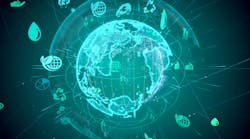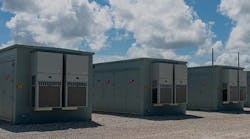In recent years, the global energy landscape has witnessed unprecedented change and extraordinary transformation driven by growing global consumption, aging grid infrastructure, urgency towards decarbonization objectives, and the rapid expansion and integration of renewable energy resources. This transformation presents many challenges, but with those challenges also come significant opportunities, and grid protection systems hold major influence.
Renewable resources are expected to account for 40%+ of energy generation worldwide by 2030, according to the International Energy Agency. This, along with the availability of distributed energy resources (DERs) and the increasing integration of renewables, has introduced new variables into the grid that affect reliability and stability.
At GE Vernova’s Grid Solutions business, the mission is to get power to customers where and when they need it without interruption, while protecting people, assets, equipment, and infrastructure. But as they integrate more renewables into the power mix, this pathway from the power generation source to distribution presents new challenges for grid protection.
Unlike conventional power generation, renewable energy sources are intermittent and contingent on local environmental conditions. The grid protection relays we have deployed in the past were designed to deliver stable frequency in systems run with fossil fuels that power spinning synchronous generators running at predictable cycles. These older, unmodernized systems are unable to understand or react to the behavior of solar PV or wind power, which interface with inverters, or inverter-based resources (IBRs). IBRs significantly impact the grid’s response during fault conditions observed by protection relays. IBRs, such as wind and solar PV, do not inject high flows of current when a fault occurs so they do not trip the circuit breakers that disconnect the damaged area from the grid. Grid fault levels decline as IBR penetration increases in the power system, challenging conventional grid protection strategies.
As electrical networks transition to renewable power, there will be a need for new technologies to protect the grid and ensure the safety and stability of the system. IBRs that interface with renewable sources have outputs that are controlled and thermally limited. As a result, existing grid protection infrastructure that measures fault current magnitudes may also be affected by the fault type, the generation mix prior to the fault, and more. Ultimately, many of the operational relays of grid networks today have been configured and tested for grid characteristics that were prevalent with conventional generation, and everyone is now facing the grid of the future.
At GE Vernova’s Grid Solutions business, they have spent the past two decades learning about the behavior of renewables and developing innovative solutions and digital grid protection systems that can manage numerous variables in real-time to protect the grid.
Digital intelligence evaluates hundreds of data points in milliseconds. If unusual changes in current or voltage are detected, it can send a signal to disconnect or isolate the area anywhere on the grid – whether a transmission wire or substation – where the fault occurred. This “quick thinking” is essential for managing the intermittent nature of renewables and for detecting and responding to faults when renewables are in play. In other words, this communication-aided adaptive grid protection system can take advanced measurements and make split-second decisions to preempt damage without the need of a short circuit energy surge.
These technologies provide many of the solutions that is needed, but fully answering this global challenge will require collaboration with network infrastructure owners. Such collaborations will enable GE Vernova to better understand the challenges posed on their networks and create the next generation of grid protection.
With collaboration and robust investment in both renewables and grid modernization, the industry can meet the energy demands of the coming decades in a way that is affordable, reliable, sustainable, and accessible. The future of energy is here.


